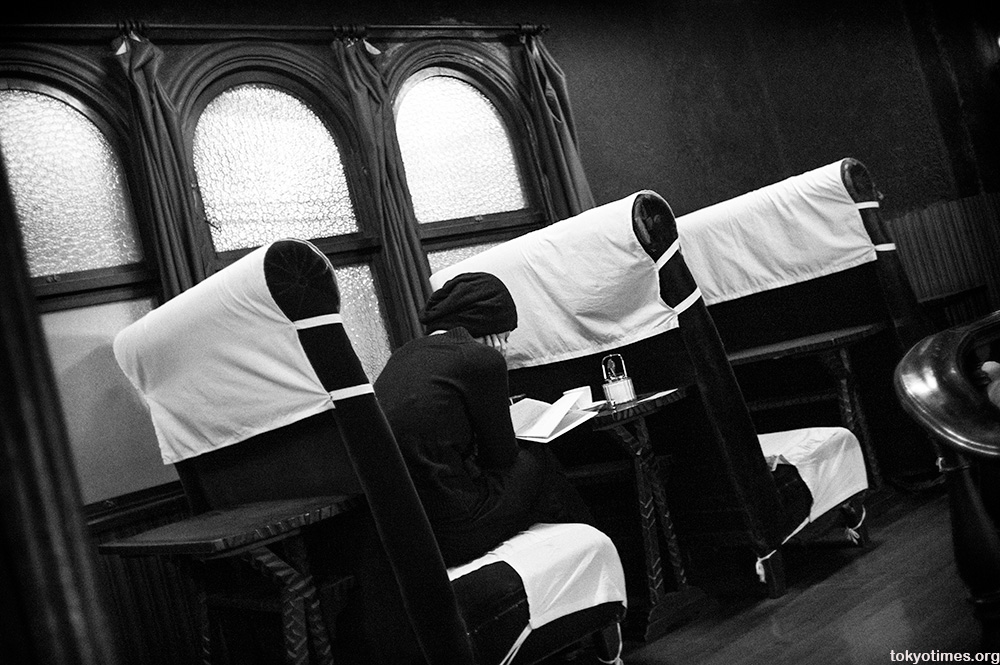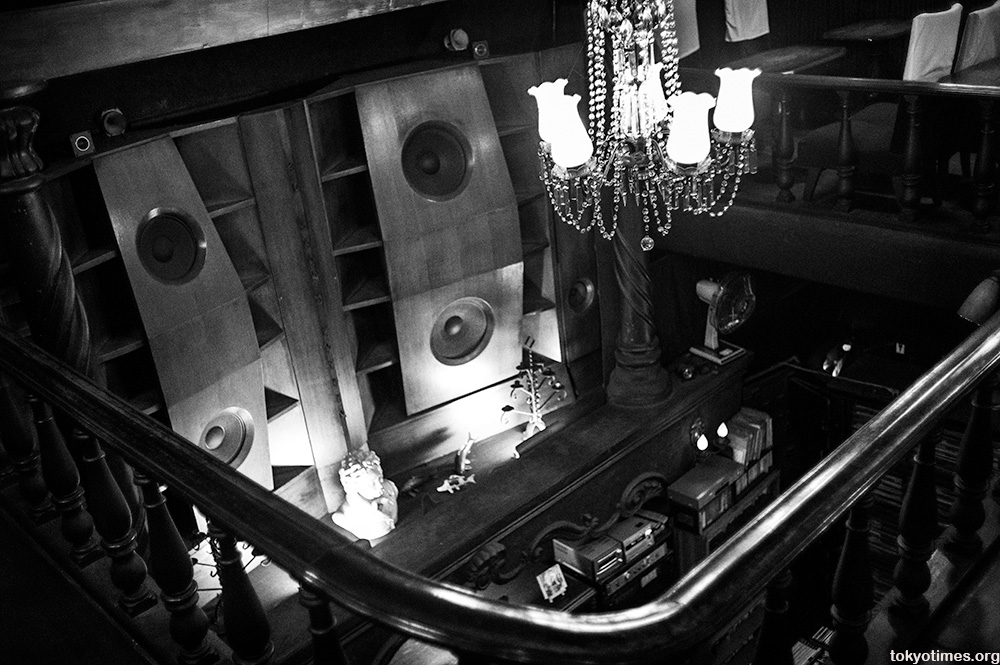Just like most (or should that be all?) large cities, Tokyo has a seemingly disproportionate number of big chain coffee shops. Places where the drinks are average, the prices high and the atmosphere utterly generic. But fortunately there are alternatives — they just have to be sought out that’s all. And arguably none of them are more worth the effort than the wonderfully old, and truly unique, Lion.

First opened in 1926, it burned down during the war, but in 1950 it was rebuilt in the same location, using the original design. A look and feel that thankfully still remains today. In fact the only changes have been outside the Lion’s doors, as it has now become one of a very rare breed: a meikyoku kissa, or classical music cafe. Somewhere people go to sit silently, sip coffee or tea, and soak up the rich sounds.

An experience that as well as being incredibly soothing, is also about as far as it’s possible to get from those aforementioned modern chains — and indeed the modern world in general.

Martin says
Great shots and description. I’d like to be there right now.
Lee says
Cheers. Taking photos was a bit tricky, as you are not supposed to do. But as it was quiet (although it was busier on the ground floor), I managed to take these few.
And yes, I can imagine. Likewise. It really is the perfect place to escape and simply relax.
June says
I’d love to have a cafe like that near here. I could stay there for hours and hours!
Lee says
If you did, you wouldn’t be alone. A lot of people were reading and studying there. A few fast asleep too!
F.Y. says
What kind of music is pumping through there?
Lee says
Classical music. There is a regularly changed playlist, but customer requests are also catered for,
Jeffrey says
What’s the story on the seating? Looks like reclaimed train seats.
Slightly OT, but have you been here? Yes, the beer and food are mediocre at best, but the interior, designed by a student or admirer of Frank Lloyd Wright, is great.
http://www.worldwidegimp.com/J-WWG/Ginza/pictures/beer_hall_med.jpg
Lee says
That’s what I thought. Got to be, haven’t they? But what the story is, I don’t know.
Not yet. But seen pictures before, so definitely somewhere I’ll get to at some point. A real pity the food and booze aren’t great…
Matt Talbot says
From the photo it’s difficult to get a sense of scale for the speakers but they look enormous. Like the kind one would see in a high-end recording studio. I imagine if they turned them up full they’d blow the knickers off you. Can you confirm that? 😉
Lee says
Yeah, those speakers are beasts, spanning two floors.
Everything was played at a very sensible volume, so while I can’t confirm whether they’d blow your knickers off, I do suspect they’d have you pinned against the back of your chair!
Benjamin says
The speakers appear to be using horn-loaded enclosures, a type of design optimized for efficiency.
This type harkens back to days where amps only had a few meagre watts to spare, and going any harder introduced significant distortion. Horn-loaded speakers are able to ‘go big’ with little power (Paul W. Klipsch was said to have demonstrated his Klipschorns with but one watt), allowing the amps to stay in their comfort zone and maintain good sound quality.
Horn-loaded speakers are still in production, but are now just one of the many types in the market. Paired with modern amps able to sustain large amounts of power, you can lower your power bill while still having reasonable listening volume… or go bonkers and have them run deafeningly loud.
Lee says
Cheers for the info. A very interesting read.